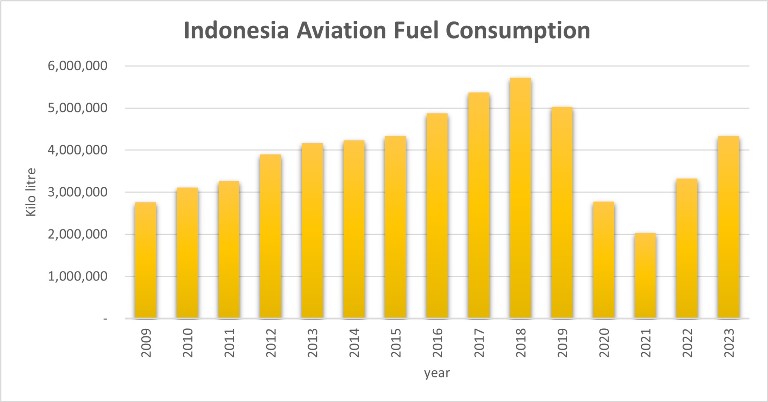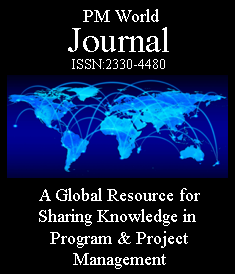in Aviation Fuel Facilities Project to Strengthen
FEL Phase and Build Up Digitalization Data
FEATURED PAPER
By Arya Yuwana
Medan, Indonesia
ABSTRACT
The average consumption of aviation fuel in Indonesia increased by 8.70% every year and is still continuous. The National Oil & Gas Company in Indonesia is required to build an aviation fuel facility project, with the aim of meeting the OTOBOSOR (On Time, On Budget, On Scope, On Revenue) target. This paper aims to strengthen the front-end loading (FEL) phase, which is prone to budget overruns and project delays due to scope changes. This study examined various WBS coding structures utilizing the Multi-Attribute Decision Making (MADM) approach and determined that OmniClass Coding Structure (OCCS) encompasses all requirements inside the Aviation Fuel Facilities project WBS for constructing the Multi-Dimensional WBS. The study concludes that the implementation of a standardized Multi-Dimensional Work Breakdown Structure (WBS) for Aviation Fuel Facilities projects, utilizing the OmniClass Coding Structure (OCCS), will establish a foundation for accurate cost estimation, effective budget allocation, and optimal resource distribution, including streamlined scheduling. In accordance with the Company’s vision for digitization, WBS can be connected with Building Information Modeling (BIM) software.
Keywords: Work Breakdown Structure, Multidimensional, Aviation Fuel Facilities Project, Omniclass, ISO 19008:2016, Artificial Intelligence, Building Information Modelling (BIM), Multi-Attribute Decision Making (MADM), Front-End Loading, National Oil and Gas Company
INTRODUCTION
- Aviation Fuel Facilities Project
Aviation fuels made up a prominent sector within the downstream oil and gas industry in Indonesia. The Company distributes aviation fuels to over 50 airports located in Indonesia and Southeast Asia. For the purpose of ensuring the quality and safety of aviation fuel supply, the Company has constructed multiple infrastructure facilities for aviation fuel products nationwide-the infrastructure required to accommodate three fundamental activities: receiving, storage, and distribution.
Retrieved from the Indonesian Ministry of Energy and Mineral Resources (2023)[1] [2], showed that from 2009 to 2023, the average consumption of Aviation Fuel in Indonesia increased by 8,70% every year. For the year 2020 – 2021, we can set it aside due to the declining trend caused by the COVID-19 pandemic.

Figure 1 – Indonesia Aviation Fuel Consumption Year 2009 – 2023 1 2
Aligned with Aviation Fuel Consumption data, Airports Council International (ACI) World’s newly released World Airport Traffic Forecasts (WATF) 2023–2052 sheds light on the trajectory of air traffic over the next three decades[3]. Data from 141 countries, including 29 new additions, the report provides granular forecasts for passengers, air cargo volumes, and aircraft movements. Meanwhile, emerging economies like Indonesia, Turkey, and Thailand are poised to climb the ranks, reflecting their growing importance in the global aviation market. These shifts underscore the evolving dynamics of air travel and the increasing interconnectedness of economies worldwide.
More…
To read entire paper, click here
Editor’s note: This paper was originally prepared during a 6-month long Graduate-Level Competency Development/Capacity Building Program developed by PT Mitrata Citragraha and led by Dr. Paul D. Giammalvo to prepare candidates for AACE CCP or other Certifications. https://build-project-management-competency.com/our-faqs/
How to cite this paper: Yuwana, A. (2024). Developing Standardized Multidimensional WBS in Aviation Fuel Facilities Project to Strengthen FEL Phase and Build Up Digitalization Data; PM World Journal, Vol. XIII, Issue XI, December. Available online at https://pmworldlibrary.net/wp-content/uploads/2024/12/pmwj147-Dec2024-Yuwana-Multidimensional-WBS-for-Aviation-Fuel-Facilities-Project.pdf
About the Author

Arya Yuwana
Medan, Indonesia
![]()
Arya Yuwana is an engineer with more than nine years of professional experience in the oil and gas sector. He holds a bachelor’s degree in mechanical engineering from the Universitas Indonesia (UI). He is presently an engineer for the Indonesian national energy company. He has participated in multiple projects within the downstream oil and gas industry, including storage tanks, piping, piers/jetties, and various downstream initiatives throughout Indonesia. Dr. Paul D. Giammalvo, CDT, CCE, MScPM, MRICS, GPM-m, Senior Technical Advisor at PT Mitrata Citragraha, is instructing him in a distance learning mentoring course, with the aim of earning the Certified Cost Professional (CCP) certification from AACE International..
Arya Yuwana resides in Medan, Indonesia, and can be contacted at yuwana.arya@gmail.com.
[1] Ministry of Energy and Mineral Resources Republic of Indonesia. (2013). Statistic Oil and Gas 2013, 55. https://migas.esdm.go.id/uploads/uploads/Statistik-Migas-2013.pdf
[2] Ministry of Energy and Mineral Resources Republic of Indonesia. (2023). Handbook of Energy & Economic Statistics of Indonesia. https://www.esdm.go.id/assets/media/content/content-handbook-of-energy-and-economic-statistics-of-indonesia-2023.pdf
[3] The future of global air travel – Airport World. (n.d.). https://airport-world.com/the-future-of-global-air-travel/









